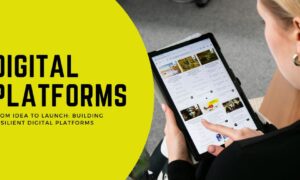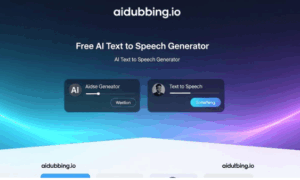Building a mobile app can feel like standing at the base of a mountain. You have an exciting idea, you’ve spotted a problem in the market, and you’re ready to fix it but you’re quickly faced with a thousand questions. What do I build first? How much should I develop before launch? Should I focus on design, performance, or features?
For first-time founders, the early stages of mobile app development are often the most overwhelming. The stakes are high, but resources such as time, money, and technical capacity are usually limited. The key to success lies not in doing more, but in doing less with greater focus.
This is where understanding what to build first becomes your greatest strategic advantage. And if you’re smart about it, working with a reliable SaaS development company can streamline the entire process and help you avoid common pitfalls that sink many early-stage apps.
Let’s break it all down realistically, practically, and from a founder’s perspective.
The Most Common Mistake: Building Too Much, Too Soon
You’ve probably been there. You’re jotting down ideas on sticky notes or typing furiously into a notes app. You envision every feature your app should have notifications, payment integration, messaging, advanced settings, maybe even AI.
This enthusiasm is powerful, but it’s also dangerous. Too many founders fall into the trap of building an “everything app” before ever validating whether people actually want it.
What ends up happening? Delayed launches, overblown budgets, exhausted teams, and products that feel cluttered from day one.
Instead of trying to build your dream version of the app on day one, start by answering one critical question: What is the single most valuable thing my app must do right now?
Think MVP, Not Full Product
You’ve likely heard of the Minimum Viable Product (MVP) concept before. But here’s the catch: a lot of founders get it wrong.
They treat MVPs like watered-down versions of their full product or assume it should still include half a dozen features to feel “complete.” But a proper MVP is much more disciplined than that. It’s the first version of your app that solves a real user problem.
If your app doesn’t solve a clear problem for a specific group of people, it doesn’t matter how many features you pack in. You won’t get users. You won’t get traction. And you certainly won’t get growth.
That’s why your first build should focus entirely on delivering one core piece of value.
For example, let’s say you’re building a mobile app for freelance designers to manage client feedback. Your MVP doesn’t need collaborative dashboards, team invites, or PDF exports. It might just need a clean client portal where feedback can be left on design files, plus notifications for new comments. That alone could make your app useful to your first 100 users.
Before You Build, Talk to Real People
Skipping user research is like trying to cook a new dish without tasting the ingredients. You need to understand what your users actually need not what you assume they want.
That means getting on calls, sending surveys, and actively listening. Speak to potential users and ask them about their day-to-day problems. Pay attention to the words they use. Learn how they currently solve those problems, even if it’s messy or inefficient.
You might be surprised. Often, what users value most isn’t the shiny solution you had in mind, but something more basic: saving time, reducing effort, or avoiding confusion.
If you can pinpoint one daily frustration they experience and solve it beautifully, you’ll have something valuable. That’s your MVP’s purpose.
A seasoned SaaS development company can guide this research process. The best ones work closely with founders during the early discovery phase not just to code the product, but to define the right product to build in the first place.
Mapping the User Journey Matters
Once you understand your users’ pain points, start mapping their journey. Think about what happens when they first download the app. What do they expect to see? What actions do they need to take immediately? How should the app respond?
This process helps you think in flows rather than features. You’re no longer just building a button or a login screen, you’re designing an experience. And at the MVP stage, that experience should be as smooth and clear as possible.
Onboarding is especially crucial. If new users can’t figure out how to get started within 60 seconds, you’ve already lost them. Keep it simple. Help them succeed with as few taps as possible.
Even if you don’t have a full design team yet, working with a SaaS development company that includes UX designers can be a huge asset. They’ll help you prioritize usability and structure the app in a way that reduces friction.
Feature Creep Is Your Enemy
This is where discipline really gets tested. You’re building the MVP, and suddenly a new idea pops into your head: what if we added gamification? Or a chatbot? Or a referral program?
It’s tempting but dangerous.
One of the hardest parts of being a founder is saying “no” to your own ideas. But your job is to protect the MVP from unnecessary complexity. Every feature you add increases development time, QA testing, bugs, and user confusion.
Here’s a rule of thumb: if removing a feature doesn’t break the core value of your app, it’s probably not essential.
You can always add it later after launch, after feedback, after validation.
Your Tech Stack Should Support Growth, Not Just Speed
In a rush to get to market, some founders pick the first developer or freelancer they find and let them choose the tech stack. That can work in some cases, but it often leads to problems later especially if your MVP gains traction and you want to scale quickly.
Choosing the right stack isn’t just about what works today; it’s about what will continue to work six months or a year from now. You want something that’s easy to maintain, supports integrations, and won’t break under load.
Should you go with native Android and iOS builds? Or should you choose a cross-platform solution like Flutter or React Native?
The right answer depends on your app’s goals, expected user base, and budget. A trustworthy SaaS development company will help you navigate those choices with long-term thinking in mind. They’ve seen what scales and what doesn’t.
Don’t Forget the Backend
Front-end polish is great, but your backend is where stability lives. If your app crashes, loads slowly, or loses user data, even the most beautiful UI won’t save it.
At the MVP stage, your backend should be lean but reliable. Cloud services like Firebase, AWS Amplify, or Supabase can help you move quickly while keeping infrastructure manageable.
You don’t need a complex custom architecture yet. But you do need a strong foundation that lets you collect data, monitor performance, and adapt as you learn from users.
Launch Fast, Then Listen Closely
It’s scary to put something out into the world that you know isn’t perfect. But perfection is the enemy of progress.
Your first launch should be treated like a test flight. Release to a small group of beta users or on limited platforms. Track how users behave. Watch what they do, not just what they say.
The insights you gather in those first weeks are pure gold. They’ll tell you which features users value, where they get stuck, and what needs to change. And they’ll help you decide what to build next with far more confidence.
This feedback loop is critical. If you’re not already using tools like Firebase Analytics, Mixpanel, or Sentry, set them up early. The data they collect will shape every future version of your app.
Keep Iterating But Stay Focused
Post-launch, it’s tempting to move fast and build every suggestion you receive. But just like pre-launch, your job is still to stay focused.
Listen to feedback, but look for patterns before reacting. One user requesting a feature doesn’t mean it needs to be built tomorrow. Three users struggling at the same part of onboarding? Now that’s worth investigating.
The most successful mobile apps evolve one deliberate step at a time. They balance user needs with long-term vision. And they resist the urge to build everything for everyone.
The Power of a Strategic Development Partner
Building a mobile app is a technical challenge, yes but it’s also a business one. A thoughtful SaaS development company understands both sides.
They won’t just write code. They’ll help you plan. They’ll help you decide what to build first. They’ll guide your stack choices, design logic, release plan, and scaling roadmap.
The right partner becomes an extension of your team especially in the early days when every decision matters more than you think.
When evaluating partners, look for those with a track record of MVPs, not just large enterprise builds. You want someone who understands constraints, moves quickly, and still builds with long-term architecture in mind.
Final Thoughts: Build Smart. Launch Sooner. Learn Fast.
Your first app version is not your legacy. It’s your launchpad.
Don’t wait until your app has everything. Wait until it has something that works, something that makes a small group of people say, “This is exactly what I needed.”
That’s when real momentum begins.
And if you need help getting there, a reliable SaaS development company can be the difference between spinning in circles and launching with confidence.
The smartest founders don’t try to do everything at once. They start with clarity, build with purpose, and grow based on evidence not ego.
Now that you know what to build first, the real journey begins.
Read More From Techbullion



































